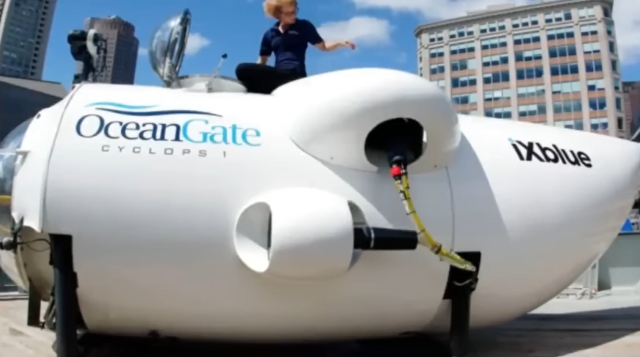 Parler
Parler Gab
Gab
Did OceanGate CEO Stockton Rush lie about "collaborating" with Boeing on the Titan sub's design?
In the past, Rush also bragged with claims that he collaborated with aerospace giant Boeing to design the now-imploded Titan vessel. Boeing has since released a statement, however, claiming that the company has never collaborated with either Rush or OceanGate. Boeing also confirmed that it has no record of ever selling carbon fiber, expired or otherwise, to OceanGate. This leaves us wondering: was anything that Stockton Rush said or did throughout his career actually true, or was it embellished at best and patently false at worst? The whole scandal is a bizarre one, to say the least. We now have various high-level people coming forward to basically say that Rush was full of horse hockey, which he cannot even address because he is now deceased along with the other four who were aboard the Titan when it imploded near the Titanic wreckage off the coast of Newfoundland. Several years before the tragedy, various experts had expressed concerns about the structural viability of the Titan. Not only was its design inherently flawed, we are told, but now there is this new evidence emerging to suggest that Rush cut corners and used cheap, flawed carbon fiber to construct it. Rush himself admitted that he "broke some rules" along the way, one of them being that he even used carbon fiber at all – titanium and steel are better, stronger, and more suited to deep-sea dives. Rush's design choice for the Titan was also flawed as it increased "pressure loads in the midsections, which increases fatigue and delamination loads," according to Jasper Graham-Jones, an associated professor of mechanical and marine engineering at the University of Plymouth in the United Kingdom. "I have broken some rules to make this," were Rush's exact words, which you can hear him speak for yourself in the following video. "The carbon fiber and titanium: there is a rule that you don't do that. Well, I did."Graham-Jones further explained in an interview why the flawed design of the Titan rendered it unsafe for use, especially at such depths as where the sunken Titanic – or perhaps the Olympia, depending on who you ask – is located. "Fatigue, he said, is like bending a wire back and forth until it breaks," Graham-Jones stated. "Delamination, he said, is like splitting wood down the grain, which is easier than chopping across the grain ... Each trip would put tiny cracks in the structure." More news about the strange events of our day can be found at Twisted.news. Sources for this article include: Breitbart.com Newstarget.comCEO Stockton Rush: "I have broken some rules to make this. (…) The carbon fibre and titanium there is a rule that you don’t do that. Well, I did.“#Titanic #OceanGate #Titan pic.twitter.com/XuUAMuCJ2v
— stonking.com (@stonking) June 22, 2023
Government efforts to control your thoughts, speech and life spearheaded by CISA
By Ethan Huff // Share
Governments continue to obscure COVID-19 vaccine data amid rising concerns over excess deaths
By patricklewis // Share
Tech giant Microsoft backs EXTINCTION with its support of carbon capture programs
By ramontomeydw // Share
Germany to resume arms exports to Israel despite repeated ceasefire violations
By isabelle // Share









